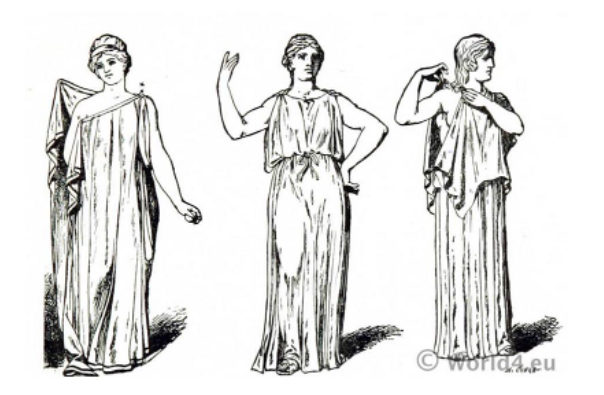
Strong’s Greek 5509. χιτών
Definition: Tunic, inner garment. Worn next to the skin. In the Hellenized world, the chiton often had 2 stripes, called clavi, running down from either end of the neck opening.

A chiton was the Greek name for the tunic & a cognate of the Hebrew kethoneth, which derives from the word for flax (the linen plant). It consisted of 2 pieces of linen or wool, with an opening for the neck, fastened by fibulae at the shoulders. For men, it was a knee-length garment. For women, it went down to the ankles.
Women had a version of the chiton called the Doric chiton, which was nearly identical to the peplos. The garment was extra long so it could be folded over to create a second layer, or skirt, over the torso.
In ancient Greece, a person’s tunic was decorated at the hem-line to represent the city-state in which he lived. Tunics might be dyed with bright colors, like red, purple, or green.